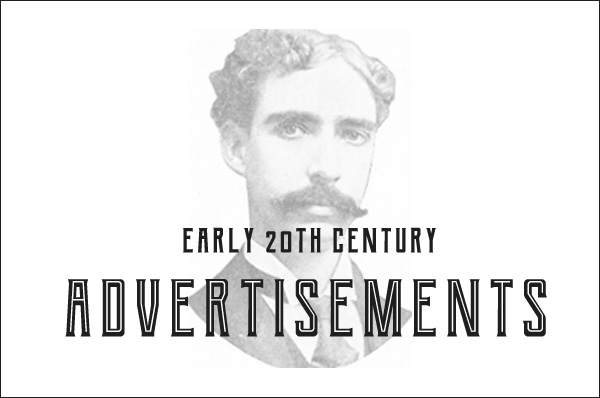 |
 |
 |
|||||||||||||||||||||||||||
It’s 1908. Get this: your music connection can double without taking up any additional room! That thick sheaf of 12 songs? It’s now 24!
For a dollar. That wasn’t cheap. In 1913 it would be $25.00 or so - which today will get you 25 songs individually, or a few months access to 40 million songs. But you won’t get access to “Sextet from ‘Lucia’” played by a military band.
That’s . . . fast.
The modern house arm that gives the advantage to the man behind it. And, by implication, woe to the man in front of it.
Civic prints for your home, in case you have no taste and want something homely that “tells a story.”
That’s Arthur Burdett Frost, 1851 - 1928. Take a look at this gruesome tableau - dead housekept and children with the tell-tale toothache kerchiefs. Two of them. Orson Lowell (1871 - 1956) was another successful illustrator, known to ad audiences perhaps from his work in Life. Not that Life, the other Life. The Life before Life became Life.
Healthy-looking lass:
The content asked you to derive as many Christian names from “Hinds Cream” as possible, and since you were just sitting there alone in the house with all the work done and the children not due back for an hour, you sat down with a pencil and notepad, and tried your luck. You wondered who won. You never knew anyone who won.
It is the weapon for YOU:
Whether you are the bold forest hunter or the timid woman. I don’t think that guy’s hunting. I think he’s up to something else, and the gun is to make sure no one keeps him from doing it.
A two-stroke valveless engine with only five parts? Man, your face must have rippled with G-forces when you opened up your Atlas: “A non-adjustable, foolproof engine.”
The wikipedia entry is . . . odd. It begins:
Got it? Then there’s this:
Must have focused their mind in a new way.
The Great Northern Steamship company? Had to be a J. J. Hill operation, right? Right.
As for the Minnesota: Built by Eastern Shipbuilding Company, New London, Connecticutt | 1917 sold to Atlantic Transport Company, not renamed, never carried passengers for ATL, 1919 renamed Troy; 1920 reverted to Minnesota, 1921 isolation hospital at New York, 1923 sold for scrap, 1924 scrapped. Wikipedia says it was the most luxurious liner built in the early days of the 20th century, but they always say that. Her sister ship was the Dakota, which lasted just under two years before it hit the rocks. The Library: Gosh, make yourself comfy.
If this did everything it said it would, why, it was a miracle:
By telling you what it doesn’t require, it reminds you how even the simplest things were pains in the keister. Just writing was a pain. |
|||||||||||||||||||||||||||||
 |










